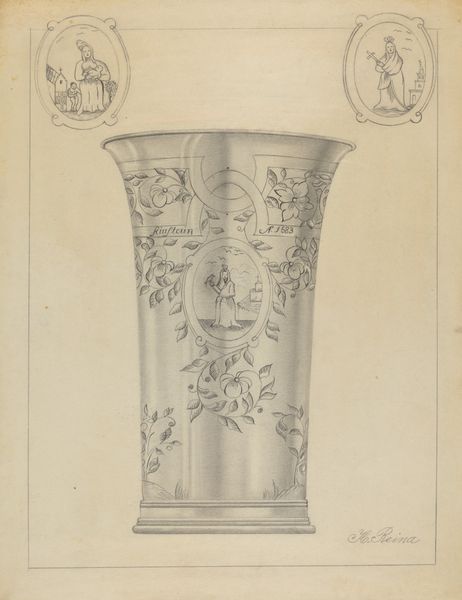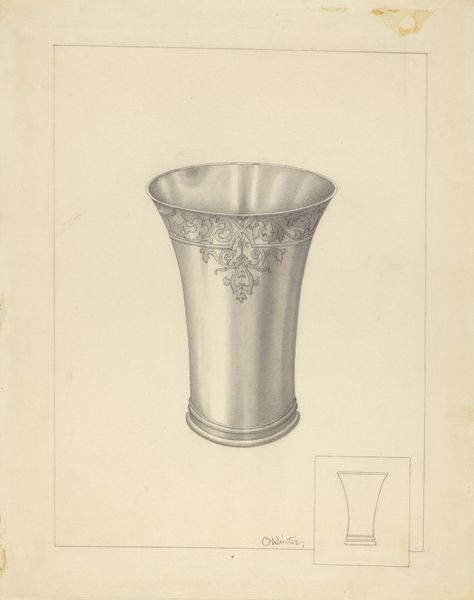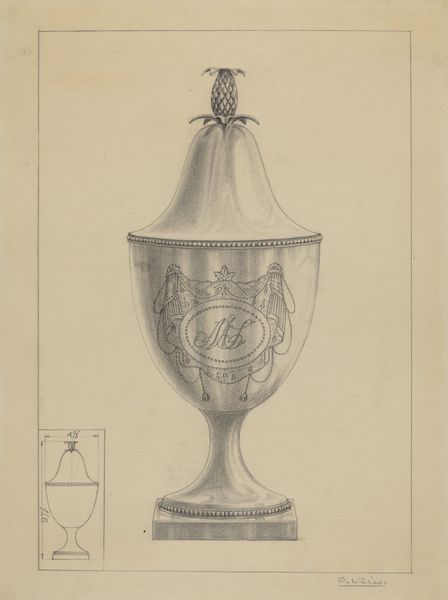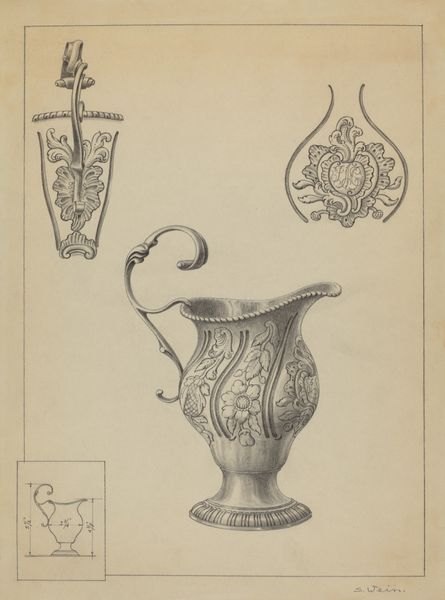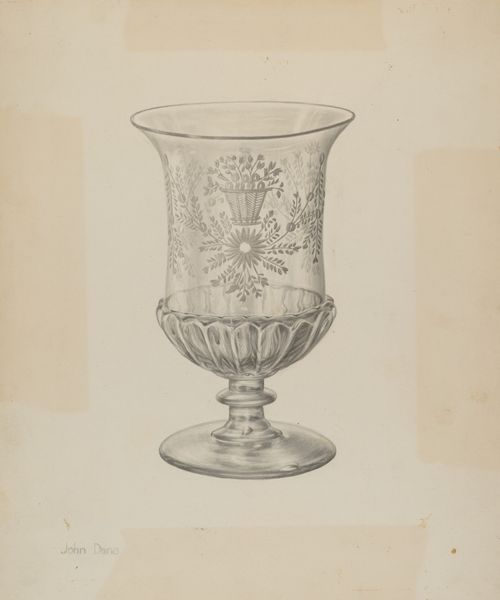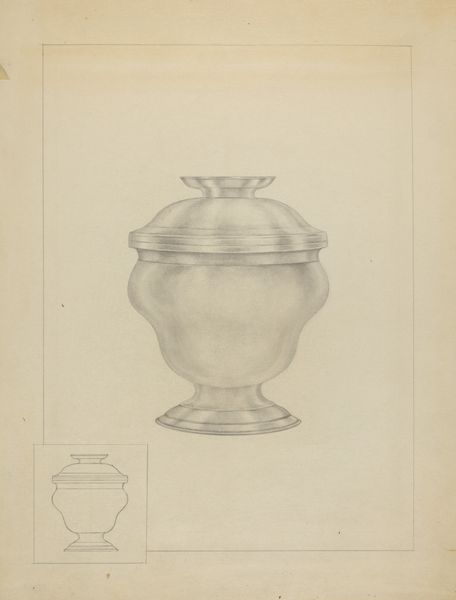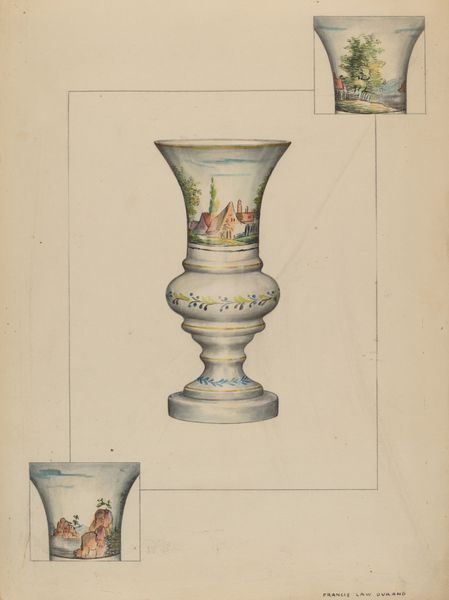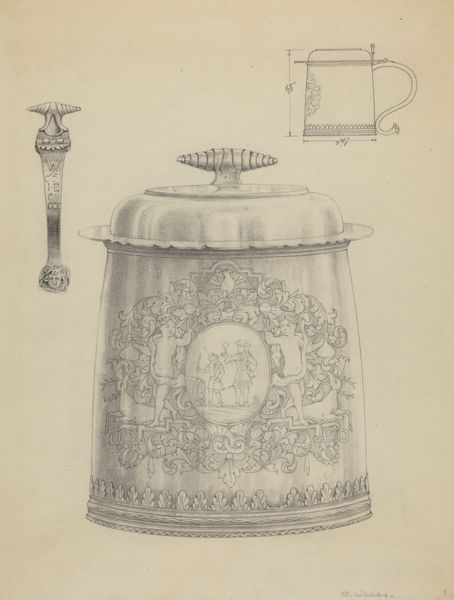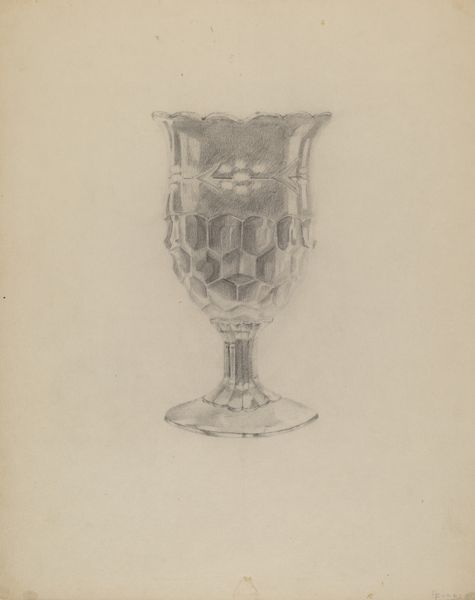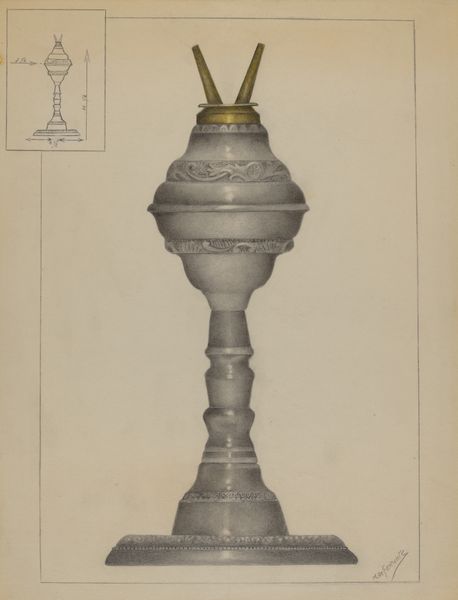
drawing, pencil
#
drawing
#
figuration
#
pencil
#
line
#
academic-art
Dimensions: overall: 30.2 x 22.7 cm (11 7/8 x 8 15/16 in.) Original IAD Object: 7" high; 2 1/2" wide
Copyright: National Gallery of Art: CC0 1.0
Curator: This delicate pencil drawing is titled "Silver Beaker," created around 1936 by Richard Schoene. Editor: It’s interesting how such a simple drawing evokes such an idealized vision of grace, isn’t it? I’m drawn to the detailed renderings of floral motifs, and these, ah, these sort of miniature scenes arranged around it. The composition overall speaks to me of a longing for a bygone era, of order. Curator: Indeed. Schoene's choice of figuration and the precision of the line work recall academic traditions, yet the subject matter hints at a broader engagement with cultural symbols. Beakers, historically, haven’t just been about function, right? Editor: Certainly not. It seems that we cannot only appreciate the piece’s artistic merit but also consider the intended cultural context, even if this image appears without provenance details. I would add that even in the most utilitarian objects, symbols of power, privilege, even spirituality might get encoded… The female figures, floral decoration… Perhaps a reflection of contemporary expectations and restrictions placed on women’s roles in interwar society? Curator: That's a very relevant line of inquiry, one through which to consider the symbolic resonance. Those female figures, do they perhaps echo prevalent tropes regarding domesticity and virtue? Could this rendering serve as commentary, endorsement, or perhaps even subtle subversion of the day’s gender roles and its ideals, viewed in conjunction with Schoene’s specific milieu? Editor: Right, or perhaps the drawing offers an insight into the intended future readership. After all, these types of decorative items might have been reserved to special events or given to some restricted categories of citizens. Schoene uses those cultural objects for some unknown propaganda, or for some kind of social distinction for which the work operates beyond art-historical analysis. It also allows us to view art as embedded within systems of economic exchange and ideological communication. Curator: Thinking about art as intrinsically linked to social dynamics and systems, how then does that apply to Schoene's piece today? The dialogue has given us, as museum professionals, a window into the art's enduring cultural significance in the now! Editor: And, from that perspective, it pushes us to stay receptive to the cultural layers encoded into that design.
Comments
No comments
Be the first to comment and join the conversation on the ultimate creative platform.

